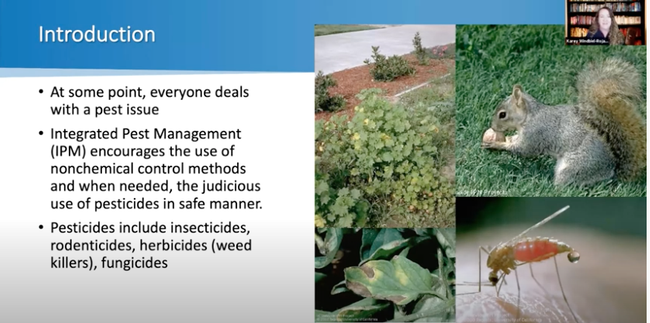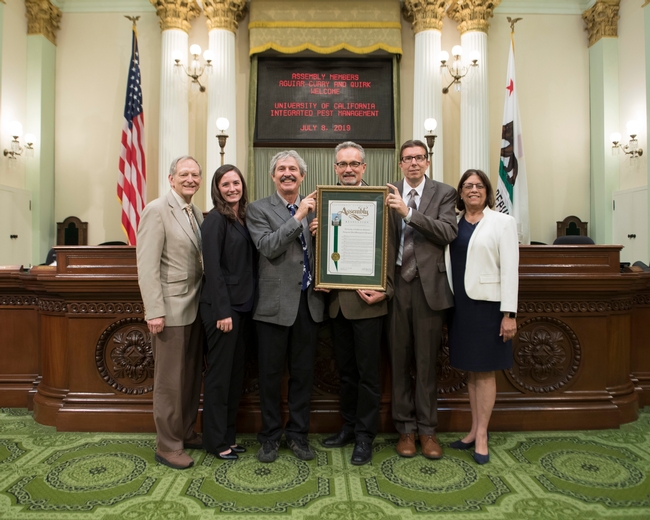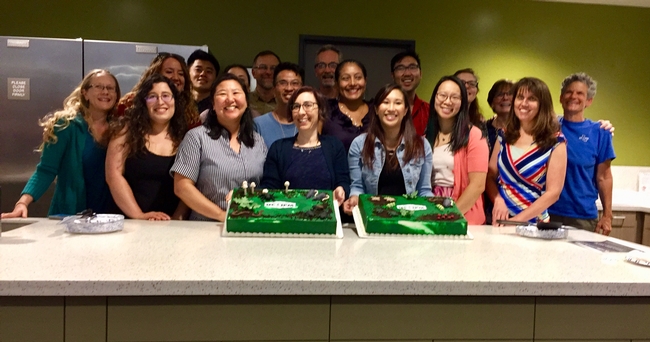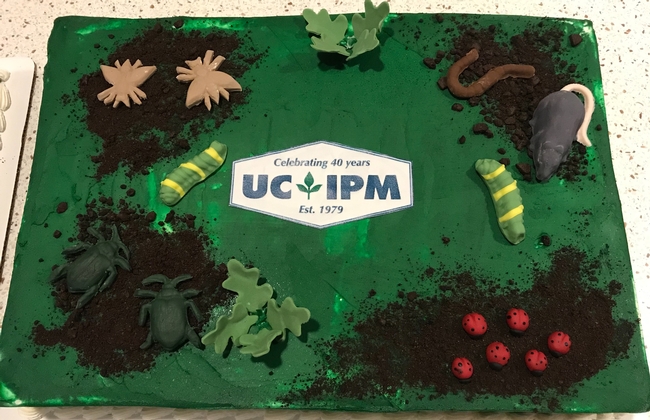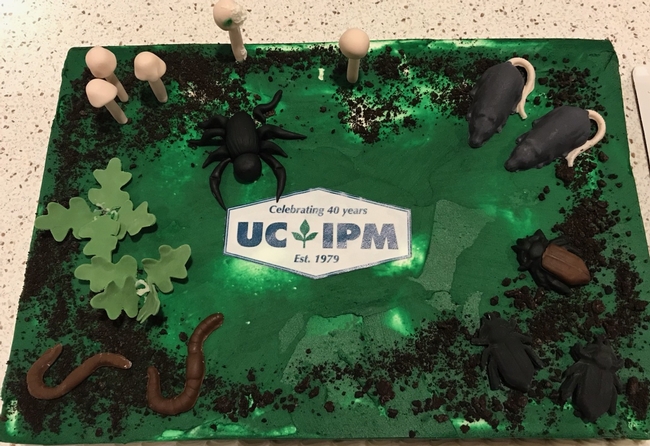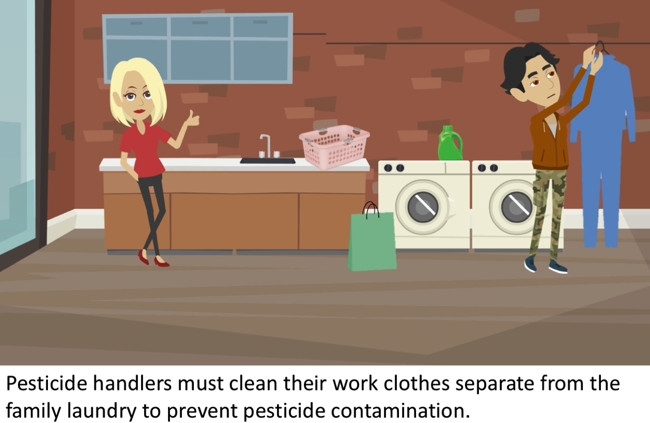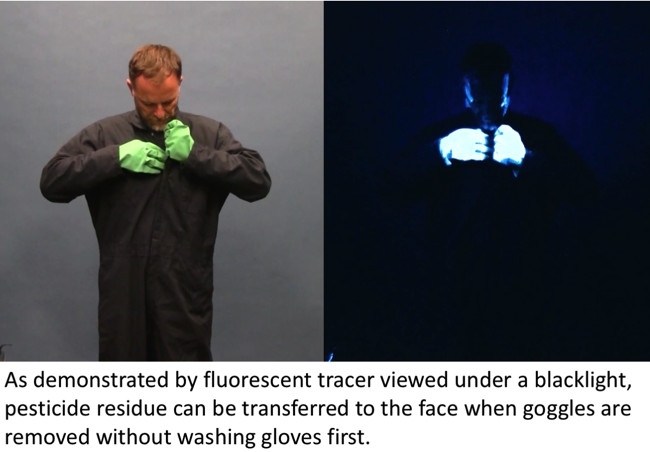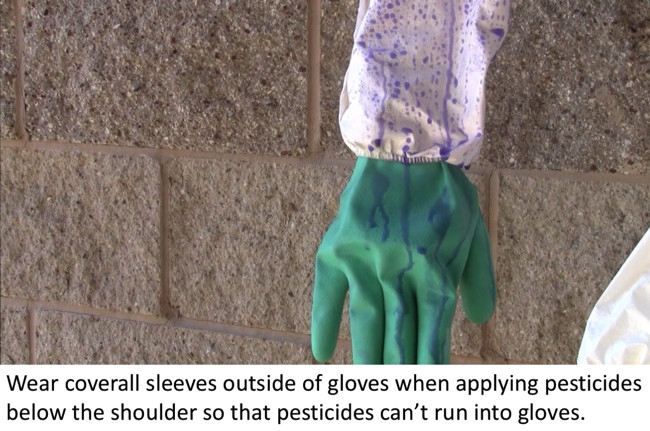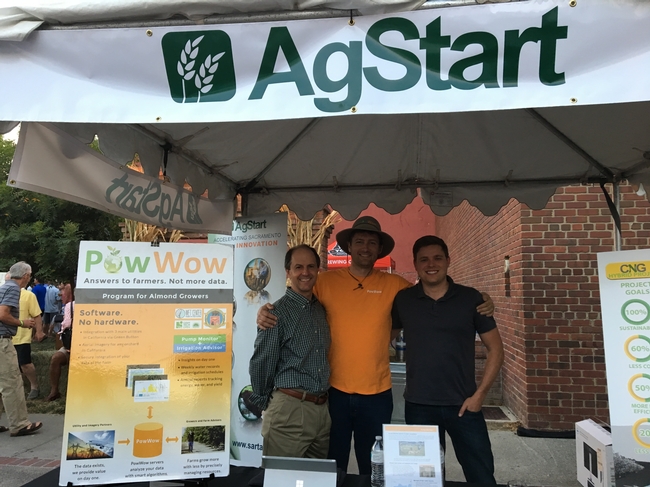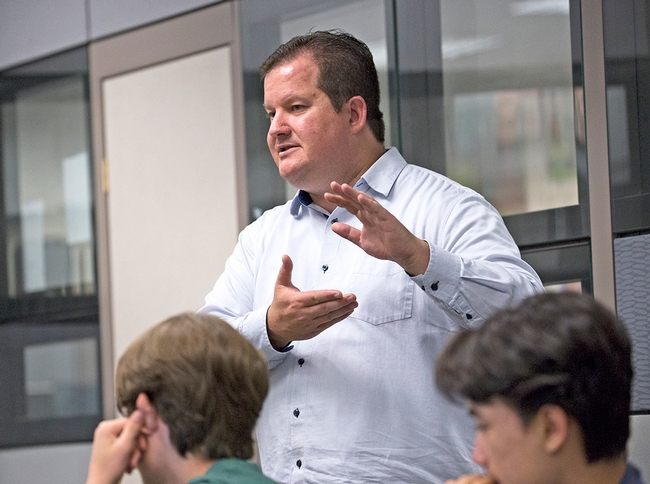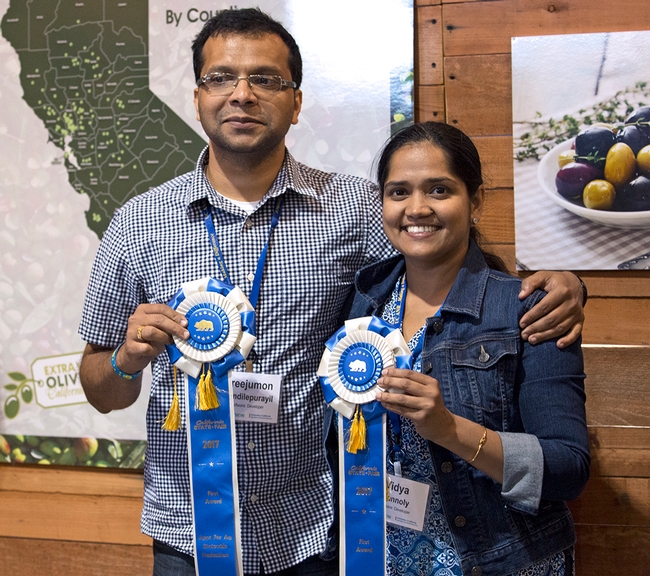Posts Tagged: Integrated Pest Management Program
Strategic Initiative Brief: Spotlight on Urban IPM and enhancing our virtual skills
Unify-Communicate-Advocate
May Spotlight Webinar
For the May Spotlight webinar, hosted by Jim Farrar of EIPD, Karey Windbiel-Rojas shared ideas on how we can all help protect our rivers and waterways through more careful management of urban pest management. The Spotlight videos offer short, sharp overviews of impact stories from across the state. Watch her presentation at Educating urban audiences to protect water quality (video).
Growing reach and impact by enhancing our virtual skills
Driven (in part) by the COVID-19 need, the SIs continue to support the building of our organization's skills to deliver virtually through both "how-to" videos and engaging webinars.
The interest in both topics was high as demonstrated by over 150 people participating in each of the series!
Owning YouTube
The four-part video webinar series clearly laid out the task that lies ahead. please visit the UC ANR Learning & Development video skills website to find materials that can help you advance your skills.
Special thanks to David Lewis, David Lile, Linda Forbes, Petr Kosina, Dustin Blakey and Jolynn Miller for all their effort and support.
Webinar tips to better engage your audience.
This four-part series presented a series of tips and techniques to better use technology (e.g., Zoom) and to better design and run your actual webinars and online training.
Check the UC ANR Learning & Development site for the webinar tips checklist or to find more about developing your webinar skills.
Many thanks to Liliana Vega, Russell Hill, Jodi Azulai and the folds from eXtension for supporting this series
Let us know what skills or tips you found useful and what more you'd like to learn.
For more on the SIs and their activities, contact
Jim Farrar: Pests EIPD
David Lile: Natural Ecosystems SNE
David Lewis: Water
Deanne Meyer: Food Systems SFS
Lynn Schmitt McQuitty: Families and Communities HFC
Mark Bell: Vice Provost SIs & SWPs
UC ANR partners with Citrus Research Board to hire citrus IPM advisor
UC ANR and the Citrus Research Board are co-funding a new citrus IPM advisor position to be headquartered at the UC Lindcove Research and Extension Center. The CRB has pledged $750,000 to cover half the cost of the advisor's salary and benefits for 10 years.
The new IPM advisor will conduct a multicounty extension, education and applied research program and provide research-based technical and educational assistance to the citrus industry. The new advisor will report to the director of the Lindcove REC, with input from the Statewide IPM Program director.
"CRB's partnership with UC ANR for this position continues to strengthen the commitment towards citrus research and IPM best practices. This is a win-win for all Californians." said Greg Gibbs, UC ANR director of major gifts.
The citrus IPM advisor will help fill the role of retiring UCCE citrus entomology specialist Beth Grafton-Cardwell. The 30-year citrus IPM veteran has also served as the director of Lindcove REC since 2006.
Human Resources is finalizing the position vacancy announcement for the new IPM advisor and will open recruitment in the coming weeks.
UC IPM celebrates 40th anniversary
The University of California Statewide Integrated Pest Management Program (UC IPM) is celebrating its 40th anniversary. Established July 1, 1979, with funding from the California Legislature, UC IPM built upon a growing movement to reduce dependence on pesticides. Drawing on expertise across the University of California system, UC IPM develops and distributes UC's best information on managing pests using safe and effective practices that protect people and the environment.
On July 8, Assemblymembers Cecilia Aguiar-Curry and Bill Quirk congratulated Jim Farrar, UC IPM director, and presented him with a proclamation honoring UC IPM at the Capitol.
Mark Bell, vice provost of strategic initiatives and statewide programs; Mark Lagrimini, vice provost of research and extension; and Anne Megaro, director of government and community relations, joined Farrar in the Assembly chambers for the presentation.
Quirk, whose district includes parts of Alameda County, noted that UC IPM is vital to the health and well-being of California's agricultural and urban communities.
“UC IPM is also active in urban neighborhoods, schools, and childcare centers,” Quirk told his fellow assemblymembers. “The advisors work with the public to manage pest populations, while reducing pesticide exposure for a healthier community.
“Specifically, we've all heard about bed bugs in urban centers and their harmful health and economic impacts on communities. UC Statewide Integrated Pest Management Program responded to the public need and now leads the effort for controlling bed bugs by researching and developing best practices.”
He added, “UC Integrated Pest Management Program epitomizes what UC Agriculture and Natural Resources is all about – getting practical information into the hands of all Californians and serving as a trusted public resource for science-based information.”
Read more about the UC IPM 40th anniversary at https://ucanr.edu/blogs/blogcore/postdetail.cfm?postnum=30686.
UC IPM offers online course on personal protective equipment
Spring is in full swing and summer is right around the corner. If you work in agricultural, turf, landscape or structural settings, you are probably at your busiest. If you handle pesticides as part of your work, you most likely wear personal protective equipment (PPE). However, do you know if you are wearing the right type of gear for the job that you do? Wearing the appropriate PPE, taking it off the right way, and correctly cleaning it prevents unnecessary pesticide exposure to yourself and others.
To prevent exposing family members or those around you to pesticide residues, learn the appropriate steps to take by viewing a new online course on Proper Selection, Use, and Removal of Personal Protective Equipment from the UC Statewide IPM Program.
The course is approved by the California Department of Pesticide Regulation (DPR) for 1.5 hours in the Laws and Regulations category. This course is designed for all pesticide handlers with the goal to provide them with information on pesticide labels and the California Code of Regulations (CCR) to help them select, wear, remove, and dispose of or store PPE.
In California, all pesticide handlers (applicators, mixers, loaders, those who transport pesticides, or those who fix application equipment) are legally required to wear PPE. However, to get the most protection from PPE, it must be used correctly. Violations involving the incorrect use of PPE were the second most commonly reported type of agricultural-use violation in 2017 as reported by DPR (PDF).
The new PPE online course opens with a scenario describing a real example of an accident reported toDPR that led to an incident of pesticide exposure because the correct eye protection was not worn. The content that follows is divided into six instructional modules, highlighting types ofPPE, how to select it, and when certain items should be worn. Participants answer short questions about the different types ofPPE, open pesticide labels to learn how to select the rightPPE and learn when certain items should be worn. Short how-to videos and animated sequences demonstrate the proper way to put on or remove items such as gloves, coveralls, respirators andeyewear. To receive a certificate of completion and continuing education hours, you must pass a final test with 70 percent or higher.
If this is the year to renew your license with DPR, get a jumpstart on it. Take this new course and all the other UC IPM online courses to refresh your knowledge and get the CEUs you need. There is a $30 fee for taking Proper Selection, Use, and Removal of Personal Protective Equipment. You are welcome to view the content for free on YouTube, but without the activities, final exam and continuing education credit. For more information about license renewal, visit DPR.
UC ANR and AgStart receive $500,000 to cultivate the VINE
California is constantly being challenged by pest invasions, obesity, labor shortages, water scarcity, food insecurity, climate change and more. To accelerate the development and adoption of technologies that address these challenges and advance food, agriculture and natural resources in California, UC Agriculture and Natural Resources and AgStart will receive a $500,000 grant from the U.S. Economic Development Administration (EDA) to cultivate the Verde Innovation Network for Entrepreneurship (the VINE).
Like a grapevine, the VINE will connect existing clusters of innovation across California and link entrepreneurs with mentors, advisors, collaborators, events, competitions, education and other services to turn good ideas into products and services people can use.
“We want to make sure every Californian has the support system to take a novel idea and commercialize a new product or start a new business,” said VP Glenda Humiston. “They don't have to be a university inventor, they could be a farmer or a young person.”
AgStart itself was established with an EDA i6 Challenge grant to assist agriculture and food technology entrepreneurs in the Sacramento Valley region. Since 2012, AgStart has supported more than 58 entrepreneurs and their companies.
“In 2016, of the 16 entrepreneurial companies that AgStart assisted, eight resided outside our region, and leveraged AgStart's program to make connections into our Sacramento Valley region,” said John Selep, president of AgTech Innovation Alliance, AgStart's sponsor.
“The VINE will expand this AgStart model of connecting entrepreneurs to the resources they need to be successful, to enable entrepreneurs residing anywhere in California to connect to the clusters of resources, contacts, mentors and potential partners that have emerged across the state,” said Selep.
“There are many wonderful regional innovation hubs in food, agriculture and natural resources so we plan to bring value by amplifying their efforts, connecting regions and organizations into a more cohesive ecosystem, and bringing value-added resources that ultimately benefit all Californians through the innovations affecting our economic prosperity, food supply and environment,” Youtsey said.
UC Cooperative Extension specialists and advisors, who work in every county, can provide insight into real-world conditions that entrepreneurs should consider in the development stage. UC ANR's nine research and extension centers can provide locations to field-test products and demonstrate their effectiveness. For example, start-up Blue River is testing its technology by flying a drone over sorghum crops to collect data at the UC Kearney Agricultural Research and Extension Center in Parlier.
For the last two years, UC ANR has hosted the Apps for Ag hackathon and has introduced the winners to mentors, tech industry advisors, farmers, funders and legal experts who can advise entrepreneurs on business structure.
The VINE, which is working with UC Davis Innovation Institute for Food and Health and Valley Vision, is being structured to complement other efforts to establish food, agriculture, and natural resources incubation and innovation resources in cluster locations around the state, such as the BlueTechValley Regional Innovation Cluster, the Western Growers Innovation & Technology Center, UC Merced's VentureLab and others.
Youtsey and Selep are seeking more VINE partners with expertise across the business spectrum.
“If our vision is successful, the VINE will make California the most fertile region in the world for entrepreneurs in ag and food technology to establish themselves, to prosper and grow,” Selep said.

